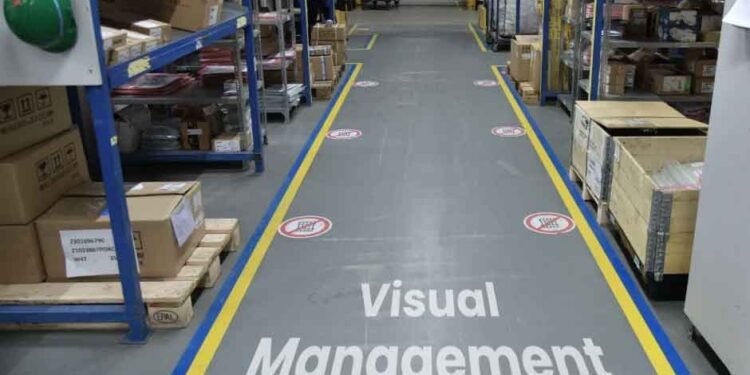A visual factory is an integrated, automated manufacturing process that enables immediate error detection and correction. The aim of a visual factory is to minimize human error in the production process by using machine vision technology.
The role of visual factories in quality control and error reduction has been increasing with time due to its advantages over conventional methods of manufacturing. A visual factory gives rise to continuous improvement opportunities by increasing transparency, lowering costs, reducing waste and eliminating defects before they reach customers’ hands. As such, it plays an important role in maintaining a competitive advantage as well as improving customer satisfaction levels while minimizing risk factors associated with errors such as delays or recalls due to defective products reaching end users’ homes or offices after being shipped from factories where these errors occurred.
The backbone of the manufacturing industry
Visual factory software is the backbone of modern manufacturing. It allows manufacturers and suppliers to track production, report on product quality, and communicate with one another more effectively. As a result, visual factory software can improve quality control and reduce errors in production.
Visual factory systems allow you to monitor your supply chain in real time by providing information about orders being processed or completed at any given time. This information gives managers better insight into how much inventory they need on hand in order for their company’s operations to run smoothly without excessive waste or delays due to lack of materials needed for production processes like assembly lines where there may be multiple steps involved before completion (e.g., welding). Visualization tools allow users to access all types of data related activities within their facilities including: plant layout plans/drawings; process flow sheet diagrams; equipment lists including serial numbers along with photographs taken during inspections performed prior to release date(s) scheduled maintenance tasks performed after each job completion date(s) etc.”
Visual factory software is used to track production and report on the quality of products
Visual factory software is used to track production and report on the quality of products. It allows for easier communication between supply chain members, which can improve quality control and reduce errors in production.
Visual factory software is an important tool in any organization that produces goods or services. The system can be used to track all aspects of production, from raw materials to finished products, including who ordered what, when they were produced, where they are located at any given time (and how long they’ve been there), how much each item costs and even its current state of completion (e.g., “in progress” or “finished”).
VF allows for easier communication between supply chain members
Visual factory software allows for easier communication between supply chain members. With visual factory software, you can create a single shared database that stores all your information in one place. This database is accessible to all members of your supply chain, so they can see what’s going on at any given time and make adjustments when needed.
Visual Factory also allows for better collaboration between supply chain members by providing tools like chat rooms where people can communicate with each other instantly without having to go through multiple forms or emails first.
Another advantage of using visual factory software is its ability to share data across multiple platforms seamlessly without losing any quality (or even quantity) of information along the way: if someone adds something new from their computer, it will appear on everyone else’s computers as well – and vice versa!
Visual factory can improve quality control and reduce errors in production
Visual factory software is the backbone of the manufacturing industry. It can help reduce errors in production, improve quality control and track production. VF can help reduce errors in production, improve quality control and track production. Visual factory software is the backbone of the manufacturing industry. Visual factory software can help reduce errors in production, improve quality control and track production.
Visual Factory provides a visual representation of all aspects of your manufacturing process. It allows you to see all work orders and schedule them accordingly, so they are completed on time. You can also use this tool to monitor progress as well as check for errors before they happen, which will save you time and money down the road!
Visual factory is an important tool for improving manufacturing quality control
Visual factory software is an important tool for improving manufacturing quality control. It allows you to track production and report on the quality of products, which can help improve your supply chain processes. Visual factory software like LineView allows for easier communication between supply chain members, which helps reduce errors in production or other areas of the process.
It’s clear that visual factory software has many benefits when it comes to improving quality control and reducing errors in production. If you’re looking for ways to streamline your operation, consider using this technology! If you’re looking for ways to streamline your operation, consider using visual factory software. This technology can help improve quality control and reduce errors in production. It’s clear that this type of software has many benefits when it comes to improving your operations.
Conclusion
In summary, the role of visual factories in quality control and error reduction cannot be overstated. From providing clear and concise information to facilitating error detection and promoting standardized processes, visual factory techniques are critical for improving quality, reducing errors, and ensuring overall manufacturing excellence. By implementing visual factory strategies, organizations can enhance production efficiency, increase customer satisfaction, and drive continuous improvement across their operations.












